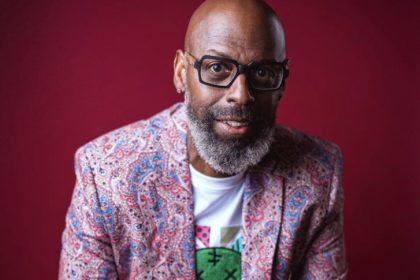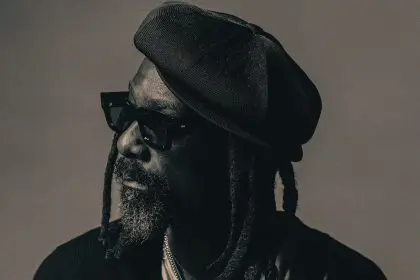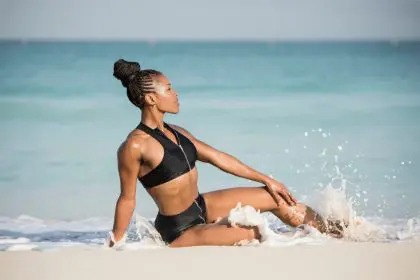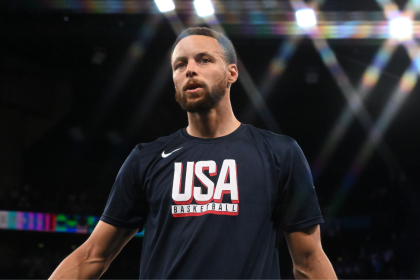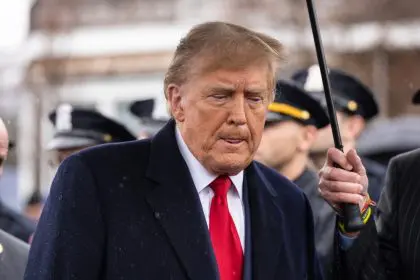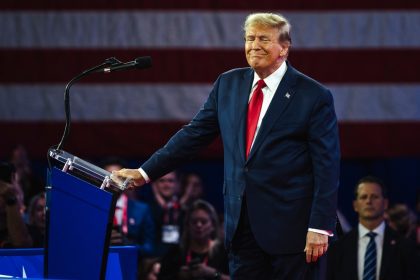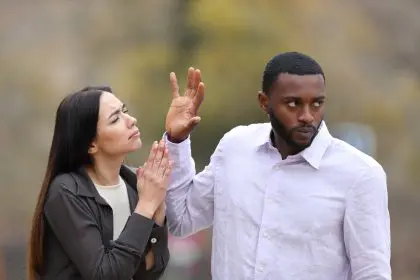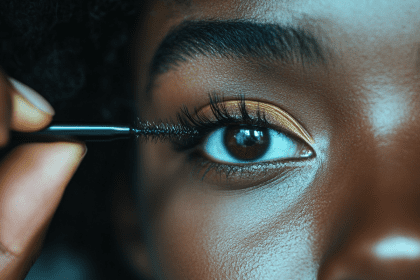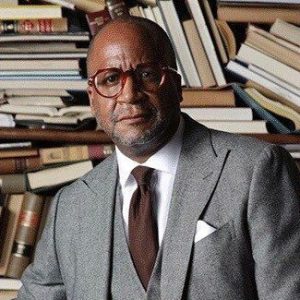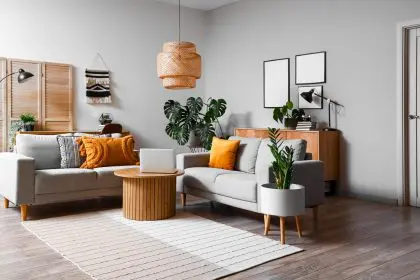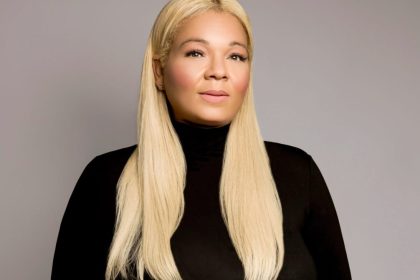Imani Y. Haynes is a museum professional whose dedication to curating Black stories is reshaping the way we see and preserve African American history. With a B.A. in History from Savannah State University and an M.F.A. in Curatorial Practice from the Maryland Institute College of Art, Imani’s work goes beyond preservation—it’s a powerful platform for silenced voices. As the Curator of the Reginald F. Lewis Museum of Maryland African American History & Culture, she is committed to creating spaces that highlight the rich legacy of Black Marylanders. Her groundbreaking work, including the founding of the Black Woman’s Museum, offers a transformative perspective on the intersection of history, art, and identity.
Hey, everybody! This is Munson Steed, and welcome to Design and Dialogue, where we bring you individuals who are truly designing the cultural impact, the vision of how we see ourselves from those spaces — beautiful museums and the like. You’ll actually get to design the historical context of how we live, how we should live, and what we should revere. I’m so proud to have the one and only Imani Haynes. How are you?
Hello! Welcome, welcome to the Reginald F. Lewis Museum.
You know, you think about that. If I had a hero growing up, it was Reginald Lewis. When he wrote his book Why Should White Guys Have All the Fun?, obviously, he spoke to me. It was a testament. I met his wife, visited his home in New York, and then to really come to Baltimore and know that it was important enough for him, that he stood up a museum in Baltimore, as not only a legacy play, but to give inspiration. Imani, what type of inspiration do you imagine you’re giving when you come to work, and what do you share from the inside of where you are, so that we can travel to you?
Well, for the Reginald F. Lewis Museum of Maryland African American History and Culture, we are all about celebrating, uplifting, and giving a platform to the African American and Black experience in the state of Maryland. As you stated, one of the dreams and aspirations for Reginald F. Lewis was that we have a repository, a place where Black art, history, and culture could be celebrated, and young Black children could be educated on these topics and subjects. And so every day I come into work, I’m thinking about our community, I’m thinking about our culture, and how we can create and bring our stories to life.
You know, you’re sitting in a moment. Can you share that moment that you’re sitting in?
Yeah, so this is our latest exhibit Eyewitness: Media and the Movement. I am the curator here at the Reginald F. Lewis Museum. So when we were thinking of celebrating the 60th anniversary of the 1964 Civil Rights Act, we wanted to create a moment that gave a different lens, so to speak, to this iconic time period of the civil rights movement. And so, through our collection, we found a couple of things that rhymed, and hence the Eyewitness: Media and the Movement. This exhibit is all about television, radio, photography, the press, and how we, as Black folks, as Black Marylanders, used these platforms to really push the narrative and get our messaging out on our civil liberties.
When you think of civil liberties, when you invite individuals in, what will they find and what would be the three things you’d want someone to really take away from this beautiful exhibit?
Some of the finds that I would love for everyone to take away are, No. 1, the object that is behind me, and I can bring us over to it a little later on. But it is a voting demonstration machine that was bought by Victorine Adams. Victorine Adams was Baltimore City’s first Black woman City Council member, and this woman brought this voting demonstration machine with her own money. She went around Baltimore City to register Black voters. But with us now being able to legally vote in this country, many of us had never actually cast that physical ballot, and so she made it very tangible and brought this around to teach people how to physically cast their vote.
And so this is one of our objects that I always highlight when we have tours, especially with young people, to really speak to the fact that this is not that long ago. Also, it’s really important to not only tell people to cast their vote, but we also have to teach our people how to cast their vote. Victorine Adams, a trailblazer in women’s rights and voting rights movements — one of the cool facts about her is that she registered 400 Black voters in one day. That tells you she goes hard.
So that’s just one of our many finds, but the messaging that we want our visitors to walk away with, when they’re walking through this space, is that this was a new form of technology. Many of these outlets that we see now as “old press” or “old technology” — our ancestors, our foremothers and forefathers, were using this as a form of how we mobilize social media and digital media outlets today. I love that we are making this connection from the past to the present and really showcasing, especially to our younger visitors, that you can do it, too. These were Marylanders and everyday people just like you, who knew that there was a need, and they filled it. Those are just a few of the takeaways that I want our audience to see and share.
From an artistic standpoint, the interaction, the meeting people where they are — I see it’s graphically appealing. How do you really program that space so that it touches all the senses and cultural nuances when people walk through the Reginald F. Lewis Museum?
As a curator, I’m always thinking about the [five] senses, you know. I’m thinking of what do you see, what do you hear, what do you smell, taste, feel, and one of the elements that’s here surrounding this exhibition — though I don’t have it active now, because we’re doing this interview — is that I’m actually sitting in our living room tableau. This is a facsimile of a 1960s living room, where we’ve actually recreated a retro television of that time period, which I’m going to show you all because it’s so beautiful.
You can see that this is a television from the time period. We also have a rotary phone. You’ll see the cigarette. These are things and ways that we create a moment in time for our audience to enjoy, but also for especially our younger visitors to see what life was like at the time. Many of them, when they walk in, they’ll see the television. Their comments are oftentimes, “It’s really big. What is it? Should we turn the knob?” And they’ll see the rotary phone, pick it up, and try to press a button. They have to learn. These are ways that we are allowing for our visitors to not only learn by using their eyes and reading, but also through exploratory learning. There are other elements we can get up and see.
We have a camera with images from Black photojournalists in this gallery space. We also have the voting demonstration machine that I shared with you all. We have a 1963 Jet Magazine issue with Gloria Richardson, and we also have an Afro newspaper print spine. But we have it 3D printed for people to actually feel the texture of the print spine, which is just a feature that I now love to share with our audience. You’ll see that there is a signature next to this gentleman’s name. He is the only living figure being celebrated in this exhibit. Mr. Moses Newson is 97 years old, and he visited with his family, three generations, and signed our wall as a gift to us. And so, since we are talking about the press and publication, you’ll also see that there is a 1953 issue of the Afro Newspaper Magazine. So we have a couple of things in this gallery for the senses to really enjoy and see. And so, we have bathroom signs, and one of my favorites is a large car radio that we’ve fabricated. And if you can see, even the dials move. So we have audio, we have television from 1963 to 1968. So once again, engage the senses. So I try my best and my hardest to make sure that this is as interactive as possible for our audience.
That’s beautiful. HBCU, Morgan State, all of that. What about attending an HBCU really incited you to want to be a curator of our history, and a storyteller, and a preserver of all the superpowers that both the people that you revere, but also just you? Why? What’s your why?
My why is a few things. I chose my institution, the illustrious Savannah State University in Savannah, Georgia. Shout out to my Tigers! I chose Savannah State because it was an institution that… initially, my path, I wanted to be a marine scientist, so I was a marine science major. But I then changed my major later on in my career in college, and I was a history major. And my professors, they came from such diverse backgrounds. And as a young aspirational museum professional, not many people look like me. I didn’t think a curator was possible. But meeting and going into my program and meeting some of my mentors, I learned that there were curators that looked like me. It wasn’t as many, but we were changing the tide.
And my original why is, as a child, I visited the National Great Blacks in Wax Museum in Baltimore, Maryland. If you haven’t gone, you have to go. And being a young child and visiting the Slave Ship Exhibition as well as the Lynching Exhibition, for many would be traumatizing, probably scary. For me, that moment… I felt like, I don’t know what this is, but I know I want to do this. I want my people to see their strength, their tenacity, and how we have endured and prevailed in the face of racism, hatred, and hurt. We still created culture. We still are creating culture and forming culture. So my why is us. That’s my why.
So, lastly, if you had to give a commencement speech at Savannah State, or even at Morgan State, which is right there, for young people, why is it important for us to visit museums and preserve our history?
It is important to visit museums because we are some of the few institutions that are still preserving our history. If we don’t have these repositories that care and keep our stories, then we no longer have them. They’re just hearsay. And after a while, stories get muddled, characters are switched. And so, this is a way for our stories to be tangible and cemented. For many years, our objects and our items were not being collected by mainstream institutions. So it’s very important for our people and for our community to continue to attend museums and support our cultural museums because we’re collecting and keeping your stories, and we’re showcasing them as well. And so, you are being reflected every day, especially here at the Reginald F. Lewis Museum.
Great. Well, Imani, I want to thank you for spending time here on Design and Dialogue, or Art and Culture. It’s just … I’m very proud of all that you’ve given, and continue to do so. Continued success, and thank you so much for being a part and being at one of my faves, Reginald F. Lewis Museum, there in Baltimore. So anybody traveling in that DMV, be sure, if you’re in Baltimore, to pass through. It’s a beautiful place, a beautiful facility, and run by, right now, this beautiful curator and very intelligent super sister with superpowers. Thank you so much.
Thank you for having us.

